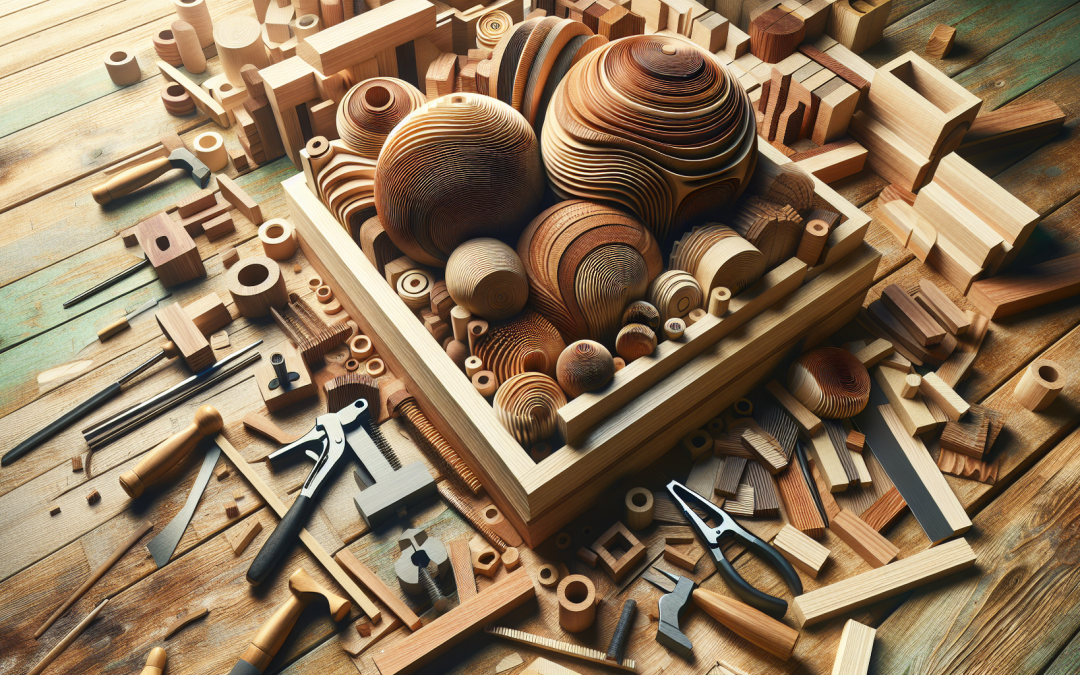Transforming wood into a masterpiece, or even a simple functional object, can pose various challenges. One trick to overcome the limitations of wood as a crafting material is the technique of wood lamination. Wood lamination essentially combines layers of wood to extend the breadth of its dimensions. To dive deep in this pool of craftsmanship, let’s start at the very foundation, with the tools you might employ.
An Array of Must-have Tools for the Woodworker
Woodworking may seem like a daunting task to take over, but with the right tools, even a beginner can manage their first attempts. Tools such as saws, chisels, and planes are the cornerstones of a basic woodworker’s arsenal. Measuring equipment is equally crucial, for precision is the name of the game here. As a novice, you may also consider learning more about essential woodworking tools.
Another significant aspect of wood lamination involves making clean cuts. The right blades and properly set-up instruments play a pivotal role in achieving accuracy in cutting. For safe and controlled practice, refer to our definitive guide on mastering precision cuts.
The Science Behind Wood Movement
Working with wood requires an understanding of its inherent properties. Every species of wood behaves differently owing to the variance in grain patterns, strength, and workability. Knowing the different types of wood and their unique traits can efficiently assist in deciding the right kind for your laminating project.
The property of wood movement is critical in woodworking, and particularly in wood lamination. An inappropriate moisture-wicking strategy can lead to messy finish jobs or weaken the integrity of the piece. For a strong and durable piece, learn more about the science of wood movement and the ways to work around it.
Top-class Joinery Techniques and Attention to Precision
Joinery is a magnificent spectacle in woodworking. In wood lamination, impeccability in various joinery techniques is vital to achieve a seamless end product. The beauty and strength of dovetails and the functionality of mortise-and-tenon are just some of the classics that you need to grasp. Explore more about these on our joinery techniques blog.
An eye for the minutest details and precision are game-changers in joinery. Learn from professionals how certain routers can create intricate patterns or carve the perfect dovetails. There is a wealth of information shared in our post about router techniques that you can utilize.
Applying the Right Finishes for Smooth and Lasting Project
Once you have the layers of wood skillfully fused, the next step in wood lamination is choosing the right finish. Not only does a good finish enhance the appeal of the piece, but it also offers protection to the underlying wood. Dive into the secrets of applying a perfect finish in our article regarding smooth finishes.
Additionally, the beauty of wood grains can also contribute substantially to the appearance of your piece. Understanding the artistry of revealing these hidden grains and employing the right sanding techniques can be pivotal in accentuating the natural splendor of your woodworking projects.
Common Mistakes to Avoid While Wood Laminating
Woodworking, like any craft, has its pitfalls that the artisan must learn to avoid. Mistakes in measurements can be a bane to the beauty of your lamination project. Sometimes, weak joints or incorrect tool use can substantially compromise the final product’s integrity.
The key to avoiding such blunders lies not just in vigilance but also in picking up a few tips and tricks from older, wiser heads. We recommend our blogpost on the most common woodworking mistakes, which offers practical advice and strategies to steer clear of these errors.
All said and done, every mistake turned learning experience will take you a step closer to perfecting your craft. After all, as they say, practice makes perfect, and with diligence and perseverance, you will surely heighten your craft with the science of wood lamination in woodworking.

